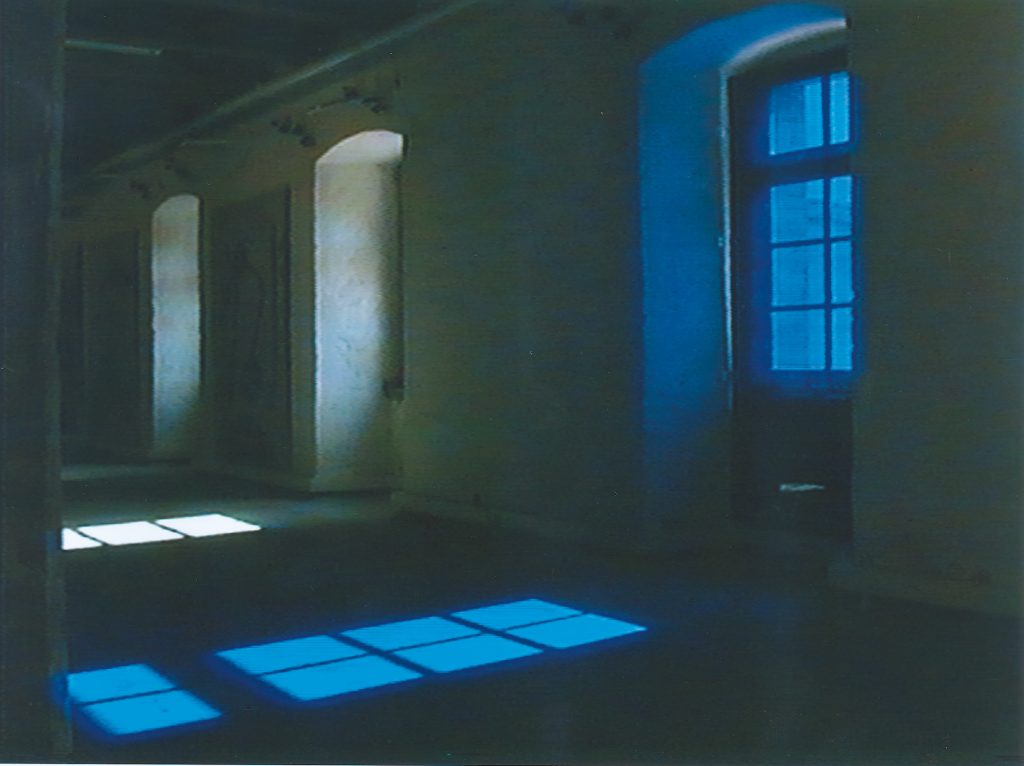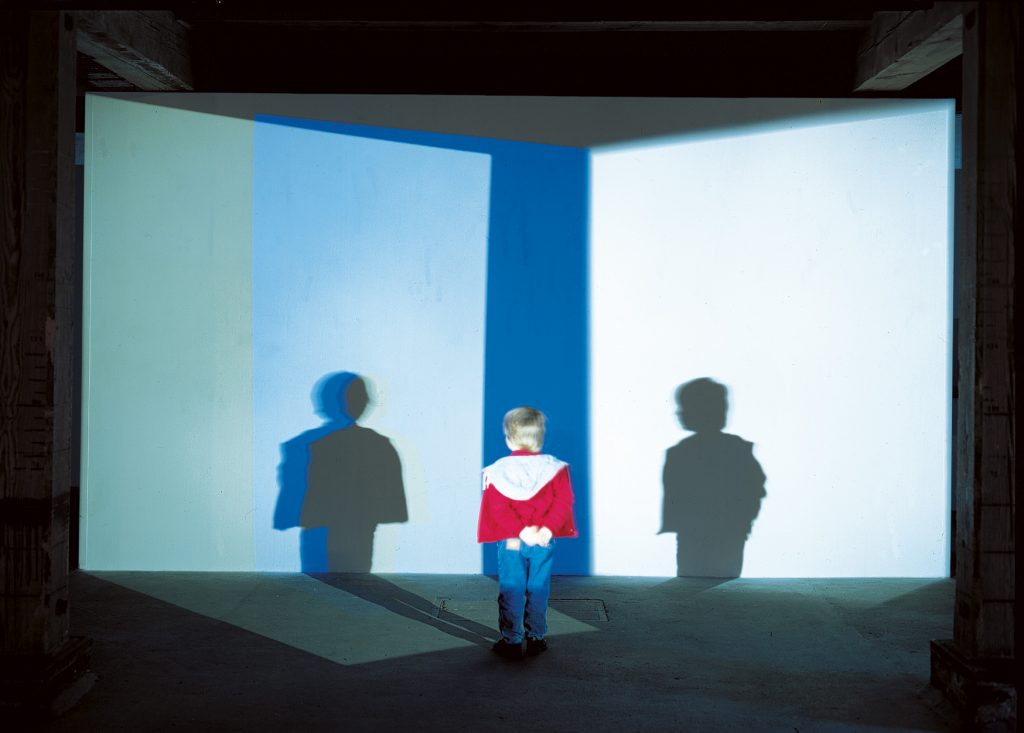de passage



Kunstspeicher Potsdam 1996
installation light projection / blue window
In the Potsdam “Kunstspeicher” a blue panel of plexiglas is placed in front of one of the gallery windows. The exterior light projected a colour intensive duplicate onto the gallery floor. Corresponding to the blue window picture in the same exhibition room “blank” slides were projected onto a large wall using three slide projectors. The slide equipment was put up in a certain distance from the projection plane so that visitors could see themselves as shadows in the rooms of light.
de passage
For this exhibition in the Kunstspeicher, Monique Thomaes displayed still another room installation which through rhythm, movement, and imaginary space experiences – and in contrast to the previously described works all of which made visible the “natural“ transformations of the light – simulated an active time experience by using guided light directed from artificial light sources in darkened rooms. Onto a wall, three projectors threw square, quadratic light areas which were distorted in their perspective owing to a slight tilt in the angle of incidence. While the left surface with its sharply defined edges remained motionless on the wall, the auto focus of the right surface’s projector was in permanent operation thereby causing a pulsing vibration which arose from the rhythmical changing in the degree of focus; such vibrations were further increased by the sequential hum of the “working“ projector. Using a blue shaded slide, the middle projector blended together the two areas standing at a slight angle to one another, consequently intensifying the “seeing“ of an actually non-existent room. The feeling that this room is actually present was so intense that the observer had to reach out in order to see that his hand is not “realizing“ a room, but simply a flat wall.
Since Monique Thomaes’ spacial works essentially develop over a time span, it was inevitable that she should also come to terms with the video medium, since this medium processes an even better facility for illustrating time-dependent processes. By using video, she becomes independent of light’s natural behavior and by sequential filming techniques she can make clearer the often minimal process of change or she can influence such change processes through artificial light sources thereby gaining an even more dramatic element.
de passage
In the creation “de passage”, surfaces of moving light are united with an architecturally related room presentation by means of slide projections overlapping with one another; this set-up, in turn, has the effect of influencing human space perceptions. Owing to his own shadow, the observer becomes, upon entering this room, a component of the installation thereby newly experiencing himself as well as his surroundings. In this instance light sources are predominantly artificial. The only source of natural light is filtered through a blue pane placed before the window. The observer becomes wrapped in light; he literally enters into the work. He does not look from without, but is rather a part of the work. In a consequent manner does the work of Monique Thomaes progress from one stage to the next. Her spectrum stretches from dissected objects to abstract constructions. Her precision of technique and handling of materials reveal a dominantly intellectual conception which does not, however, exclude the influence of empirical moments. Out of the detail, out of the simple presentation of a prop, evolves an entire universe which is just as artistic as it is alive.
Thomaes succeeds in uniting the stringent methods of constructivism together with delicate half-tones and then goes on to distill from this unity a poetic ensemble. From so many threads an entire network is spun, a network which may be understood as a complete whole and which is always in a state of dynamic change.
Eye – light – time – 1994
published in “de passage monique thomaes” vice versa verlag berlin 1998
in the catalogue “invite” Cultural Centre Knokke 1994
translation by John Epstein
de passage
… back: 1995-96 Monique Thomaes created various works for rooms or, to state it another way, with and in rooms. Time in space is first of all real time in which movement was also reflected over previous years in the sculptures. In the Potsdam “Kunstspeicher“ she placed a blue pane of plexiglas in front of the gallery window. The exterior light projected a color intensive duplicate onto the gallery floor. This light-image undergoes transformation, yet a transformation so gradual that it is hardly capable of being perceived – or at best only in the mind’s eye – during the average time a visitor spends in the gallery. The day’s various lighting conditions cause the window and floor presentation to appear respectively different in their qualities of brightness, intensity, and contrast. Toward evening the picture fades, the contours of the mullion and transom blur, and the projection extinguishes.
